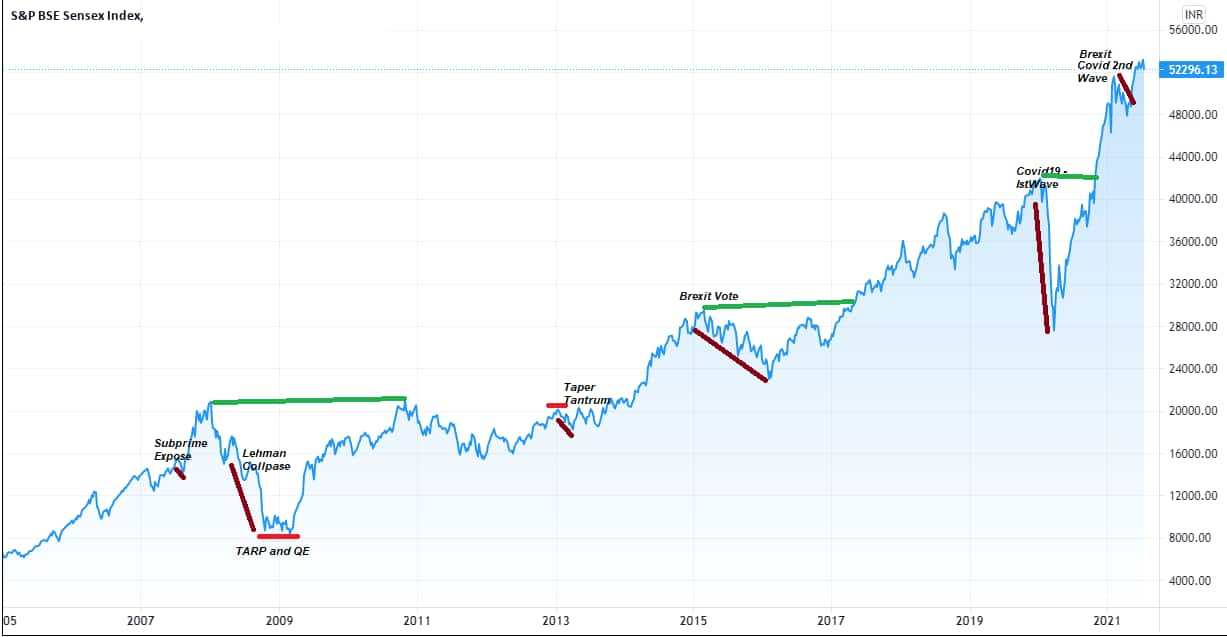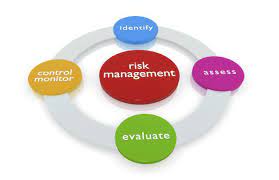One of the pearls of wisdom I inherited from my grandfather relates to the risk management in life. He advised: “When the nature warns you, it usually does not harm you; but when the nature does want to harm you it usually does not warn.”
I have observed that a large proportion of extreme hurricane, cyclone and Tsunami warnings are subsequently downgraded to much less severe intensity. In most cases the heavy rainfall as predicted by weathermen does not occur. Whereas, earthquakes, flash floods, lightening, cloudburst, Tsunami, wildfire, etc. occur when anticipated the least.
In my view, the risk management in life therefore goes much beyond what is known to you. Risk management, contrary to the popular belief, is not limited to the anticipated adversities. A resident of Japan or Fiji insuring his house against earthquakes is just a loss mitigation exercise. An adequate risk management measure in their case would perhaps include building an earthquake resistant house or moving out of the high seismic zone.
Applying this pearl of wisdom to financial investment, I have observed that if I anticipate an event to cause significant correction in prices, the correction usually does not occur as anticipated by me. I have realized that being a tiny investor, I am not privy to any information arbitrage. All data, news, estimates, forecast, etc. known to me, would have usually passed through all the open channels of information, including social media. If I know something, everyone else also knows it. It is therefore safe to presume that the events that I am anticipating to occur have already been analyzed by the impactful investors. Obviously, the current price in the market is reflecting their understanding and preparation to safeguard (or take advantage of) against the now widely anticipated event.
The risk management in relation to stock market therefore involves accepting the famous Murphy’s Law in the letter and spirit. The law reads “everything that can go wrong will go wrong”. Following this adage will bring discipline to investment. This will involve, inter alia, no leverage (avoid greed), affordable asset allocation, realistic return expectation, psychological preparation for unexpected events (not freezing on Lehman collapse or pandemic outbreak etc.)
It is pertinent to note that most notable business failures in India were rated investment grade, the night before they failed. Global Trust Bank, CRB Group, IL&FS, DHFL, Yes Bank; etc. were all popular investments amongst traders; and Franklin Templeton was the most respected name in fund management industry.
It is important to remember that loss mitigation measures like hedging the portfolio and raising some cash may not be risk management per se. Sincerely believing that unexpected events “could” and “will” occur is prerequisite to the risk management. It therefore must involve preparing well for the potential fallouts of the unexpected adversities, both financially and psychologically.
The noise versus risk
The risk in stock market must be understood different from the noise. The risk is probability of the occurrence of something totally unexpected. The example of such occurrences in recent past are collapse of Lehman Brothers (2008), sovereign default crisis in peripheral Europe (2008-09), Brexit vote (2016), and outbreak of Covid pandemic (2020). All these events resulted in sharp correction in global equity prices.
However, no material correction in the markets was seen, when Greece failed to meet its obligations to ECB/IMF bailout and needed further assistance, the Fed actually started tapering its bond buying program, Brexit actually happened, and second (and more fatal) wave of Covid pandemic resulted in larger number of causalities across countries.
I vividly remember, in the summer of 2009 one very famous fund manager passionately spoke about “inevitable” hyperinflation in the wake of quantitative easing programs undertaken by central bankers. He argued for investing in hard commodities and gold. The fund house he belonged to, paraded the global commodity gurus in front of high Networth investors (HNIs) and corporate treasury managers, to market their gold and commodities fund. Latin America, for its commodity dominated businesses, was marketed as the best place to invest for next decade.

Unfortunately, that fund manager and that fund house were not alone in their forecast of hyperinflation. Almost every economist, strategist and fund manager believed that hyperinflation has been thrust upon us by central bankers.
However, all trades positioned towards hyperinflation – short bonds, long gold & commodities, long USD – resulted in material losses (or at least loss of opportunity) for investors and traders. In reality most central banks struggled for a decade to create a minimum level of inflation to support investment. The struggle in fact still continues for ECB and BoJ.
The fresh round of fiscal and monetary stimulus to mitigate the economic impact of the pandemic has reignited the debate on hyperinflation. The taper tantrum is back in the headlines. The third wave of the pandemic is also making investors nervous.If history is any guide, none of these events may cause any material correction in stock prices; simply because –
- I, the tiny investor with no information arbitrage, am well aware of the probability of the occurrence of these events;
- Millions of terabytes of data has been consumed in discussing, writing and reading about these events, in a manner that even my 11th grade daughter can intelligently speak about these “risks”;
- Every investor and trader on the street is anticipating that big correction, and
- A significant proportion of trades are positioned for that correction (commodities for hyperinflation, precious metals, USD and developed economy bonds as safe haven.
The large correction, like always, will occur when only a miniscule proportion of market participants are anticipating it. Moreover, it will occur due to reasons no one is publicly talking about. It could be economic, geopolitical, or a natural disaster. Failure of a large German or Chinese Bank may not be a reason of collapse since we have been talking about this for few years now.
I find it relevant to quote a message I received from social media in this context.
During a study at Harvard in the 1950s, Dr. Curt Richter placed rats in a pool of water to test how long they could tread water. On average they’d give up and sink after 15 minutes. But right before they gave up due to exhaustion, the researchers would pluck them out, dry them off, let them rest for a few minutes – and put them back in for a second round.
In this second try – how long do you think they lasted? Remember – they had just swam until failure only a few short minutes ago.
Rats managed swam for 60 hours! The conclusion drawn from the study was that since the rats believed that they would eventually be rescued, they could push their bodies way past what they previously thought impossible.
Managing the risk
The first step of managing the risk in equity portfolio is to understand the difference between mitigation of loss and optimization of the risk. The loss mitigation essentially means accepting a certain quantum of loss as a cost of owning equity portfolio. Accepting loss, due to the events extraneous to the businesses underlying the portfolio, cannot be part of the investment strategy. The risk management strategy should be to optimize the risk in portfolio in a manner that the investor could conveniently tolerate the temporary decline in the value of the portfolio.
Raising cash, buying put options, increasing weight of defensive stocks in the portfolio, even if the investors has high conviction in cyclical sectors, are some of the loss mitigation techniques. I do not consider them risk management tools.
Risk management techniques in my view, involve, inter alia—
(a) Following an asset allocation plan that is best fit to the financial, social, and personal circumstances of the investor.
(b) Sticking to the asset allocation plan without bothering about the market corrections.
(c) Targeting reasonable returns from the investment portfolio. Under the present circumstances if you target 7-8% CAGR in your investment portfolio, you can easily manage with less risky assets, decent liquidity, no leverage, and low volatility. However, if you target 18-20% CAGR, more allocation to risky assets, higher volatility, leverage may become necessary.
In my view, a sustainable 10% premium on the nominal GDP growth rate is a reasonable return to expect from equity portfolio. If the economy is growing at 7% nominal rate, a 7.7% return on equity portfolio would be a decent performance.
(d) Targeting absolute returns. When you try to correlate your returns to some arbitrary benchmark, or the returns claimed to have been earned by your friends, club partners or famous investors/fund managers, you essentially sacrifice your investment plan and chase a mirage. It’s like a seasoned hockey player trying for a place in cricket team just because it pays more money and begets more fame. The end result usually is disillusionment, frustration, and failure.
(e) Choosing investment product you understand, rather than accepting whatever you are told to buy by charitable advisors.





































